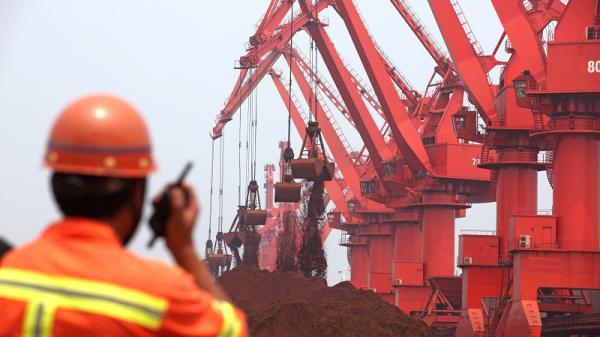
James Laurenceson, Deputy Director, Australia-China Relations Institute, University of Technology Sydney |
This article appeared in The West Australian on May 18 2015.
Fortescue boss Twiggy Forrest didn’t hold back: last week he accused the big miners of having a “callous disregard for Australia”. Treasurer Joe Hockey said he was sympathetic to Forrest’s position. Senator Nick Xenaphon called for a Senate inquiry. A parliamentary inquiry of some sort looks like getting the nod.
In all this bluster and commentary on the plummeting price of iron ore, there’s one number that’s often forgotten: one billion tonnes of Chinese steel. The iron ore investment boom a few years back wasn’t done with an eye on Chinese demand in 2015. Rio and BHP were looking a decade ahead to 2025 when they expected Chinese steel production would peak at around one billion tonnes. They are sticking to that forecast.
If they are right, their decision to invest and expand output will appear inspired, not reckless.
The problem is that doubts around their forecast have grown. The World Steel Association (WSA) says that last year China produced 823 million tonnes of steel, a 5.6 percent increase on 2013. But economist Ross Garnaut and a growing band of followers reckon that “peak steel” has now been reached and output could slump by more than 25 percent.
This pessimistic outlook is based on two shifts in China’s economy.
The first is that services and not manufacturing is now China’s largest sector. The firms behind this surge, like e-commerce giant Alibaba, demand bandwidth not girders.
The second is a decline in the rate of investment as household consumption grows. Consumer goods like cars and washing machines need steel but not as much as apartment buildings and bridges.
China’s latest production figures are worrying. The WSA puts steel output in the first quarter of 2015 at 1.7 percent less than in the same period last year.
But it’s also true that China’s construction industry, which is responsible for more than half of the country’s steel demand, is in the middle of a major cyclical downturn.
In a paper last month the IMF estimated that the supply of residential housing has been running ahead of demand and the overhang could take until 2020 to clear. That said, excess supply is greatest in hundreds of third and fourth-tier cities that even most Chinese have never heard of. If floor space has been built in the wrong places in the past, that doesn’t mean more won’t be needed in Beijing, Shanghai and other first and second-tier cities in the future.
Westpac economist Huw Mackay has cautioned that picking peak steel in advance is notoriously difficult. International historical experience tells us that steel production per person tends to rise along with income but only up to a point. Exactly when the relationship turns and how much steel will be produced when it does varies from country to country.
The view from Seoul, Taipei and Tokyo suggests that the forecasts of the big miners may not be so far-fetched after all. China’s neighbours climbed the development ladder just a few decades earlier and also adopted a growth strategy emphasising high rates of investment.
Last year China produced 610kg of steel per person at a per-capita income of around $US12,000.
Meanwhile, Korea produced 1400kg per person at an income level nearly three times higher. The GDP share of household consumption and services in Korea is also around 15 percentage points higher than in China.
Steel production per person in Taiwan is 984kg, 61 percent higher than in China. In Japan its 871kg, 43 percent higher.
To make predictions even sharper, other factors that affect steel demand apart from income need to be factored in like the rate of urbanisation and car ownership. That’s precisely what researchers at the Australian National University did in 2010. Their best guess?
China won’t reach peak steel until the mid-2020s by which time its per-capita income will have nearly tripled. By then steel production will be close to 800kg per person.
Now, multiply that figure by the 1.45 billion people that the United Nations says will be living in China by then and you get total steel production exceeding 1.1 billion tonnes. Sound familiar?
Put another way, Chinese steel production per person can fall short of current Japanese levels by 20 percent and the one billion tonne marker will still be crossed.
Only time will tell who is right but Rio Tinto and BHP aren’t alone in their optimism.
Author
Professor James Laurenceson is Deputy Director of the Australia-China Relations Institute at the University of Technology Sydney.


